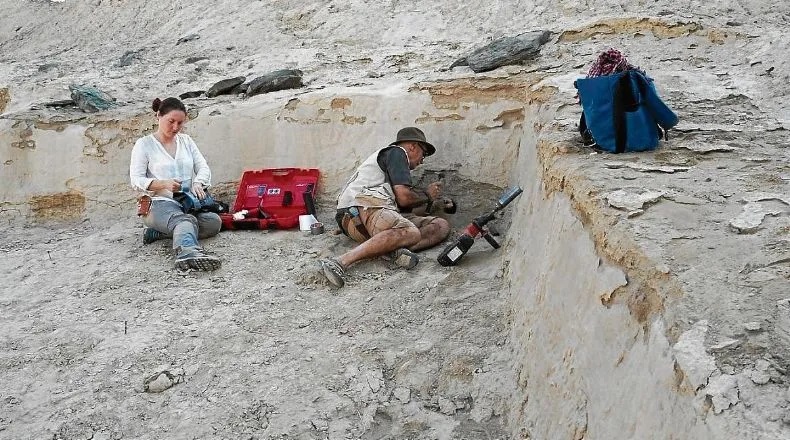A new Spanish excavation in Eritrea provides remains from more than a million years ago
A new Spanish excavation in Eritrea, in the Horn of Africa, has found remains of giant fauna, plant trunks and tools from more than a million years ago, which will help to better understand the climate and ecology of the Lower Pleistocene in the basin of Engel Ela-Ramud.
 The excavation was carried out from February 16 to March 11 and was co-directed by Bienvenido Martínez-Navarro, ICREA research professor (Catalan Research Institute and Advanced Studies) at IPHES (Catalan Institute of Human Paleoecology and Social Evolution), and It has been financed by the Palarq Foundation and the Ministry of Culture.
The excavation was carried out from February 16 to March 11 and was co-directed by Bienvenido Martínez-Navarro, ICREA research professor (Catalan Research Institute and Advanced Studies) at IPHES (Catalan Institute of Human Paleoecology and Social Evolution), and It has been financed by the Palarq Foundation and the Ministry of Culture.
During the eighth excavation campaign, a team made up of paleontologists, archaeologists and geologists, co-led by Bienvenido Martínez-Navarro and Tsegai Medin, researcher of the Eritrean Commission for Culture and Sports, intervened in the Engel Ela-Ramud basin, in the sector northernmost in the African Rift Valley, in the Afar triangle, near where the famous Lucy was discovered.
The works have provided remains of giant fauna, fossilized plant trunks and stone tools from more than a million years ago, which, according to Martínez-Navarro, "will help to better understand the climate and ecology of that period in Africa."
The paleontological and archaeological surveys carried out in the Delahaitu, Gameré and Bolali areas have allowed the location of important fossils of large mammals, some of them on the surface and others in their original position, especially of buffalo, elephants and pigs, and the Achelean lithic industry.
In addition, the sectors of Erau have been surveyed, where a new level with fossils has been identified, in which two incomplete skulls of a giant hippopotamus appeared.
Lorenzo Rook and Luca Pandolfi, from the University of Florence, Tsegai Medin and Dawit Araia from the Eritrean group, the restorer hired by the IPHES Jesús Peinado, and Welcome Martínez-Navarro have participated in these works.
With the same equipment, the Dibokole-Diaritana sector has been surveyed for the first time, where some bone remains of bovines have been obtained, and trunks of fossilized plants that will allow knowing the tree species present in the region during the Lower Pleistocene.
The excavation of the Luba Gadhi II-Gallardo site has also continued under the direction of Antoni Canals (IPHES-URV) with the collaboration of the Eritreans Abel Ghirmay, Isaias Tesfazghi and Samuel Tesfamariam.
A total of 14 square meters has been acted on and 44 records corresponding to the lithic industry of Aculeles and fauna have been recovered, mainly corresponding to crocodile, hippopotamus and a giant pig.
In the recent campaign, the geological works led by Oriol Oms (Autonomous University of Barcelona) have continued, influencing not only the collection of geological and cartographic data, but also various stratigraphic series have been sampled to carry out isotope studies through from the records of ostracods and gastropods, by Alejandro Granados, from the University of Malaga, which will help to better understand the climate and ecology of the basin during the Lower Pleistocene.






